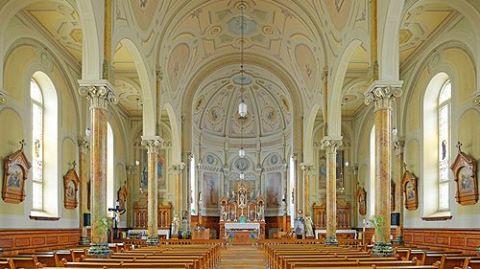The historic Saint-Bernard Catholic Church in Fournier has a future.
A letter from the Office of the Archbishop dated February 18, 2022 was read aloud to the Saint-Bernard congregation at its March 6, 2022 service. The letter says that the parish presented a concrete vision and realistic plan to revitalize the Christian community connected to the parish. In his letter, Archbishop Marcel Damphousse writes that he thinks it will be wiser to move forward without a closure date, but to facilitate exchanges that would continue to promote hope for parishioners.
“This decision should above all revive within you a new hope for the future for your parish, to re-establish confidence among you, and finally, to give you the opportunity to demonstrate your faith in the future of your church, which depends upon the responsible engagement of your community…” wrote the archbishop.
Parishioners are thrilled with this new lease on life; they have been living with the threat of closure since February 2017. That is when the diocese told the parish the church would have to close, due to declining attendance.
But it was bad timing. The local parish was in the midst of celebrations marking its 150th year as a parish.
Parishioners were against the closure and tried unsuccessfully to have The Nation Municipality assign a heritage designation. The municipality revoked its initial recommendation for designation after Archbishop Terrence Prendergast said he would permit the parish to remain open for five years to restructure and consider its future mission–if the municipality revoked its heritage designation.
In the meantime, a new Catholic Church with additional meeting space was being built in St-Isidore, following the destruction of that building by a devastating fire. Some felt that the members of the St-Isidore congregation could have attended church in Fournier, but the 10-kilometre distance and desire of St-Isidore church-goers to have their own church precluded that from happening.
The Fournier parish asked the diocese to permit the church to stay open while it planned for the future but did not want a five-year deadline to justify its existence. During that time, the church hosted events, held a candlelight vigil, assembled a slide show about the church’s history and worked hard to raise its profile in the surrounding community. Francophone historian Michel Prévost, D.U., président de la Société d’histoire de l’Outaouais, attested to the church’s historical significance.
Then the pandemic happened and the church was unable to hold regular services or conduct fundraising events. But now, the congregation has permission from the diocese to move forward.


